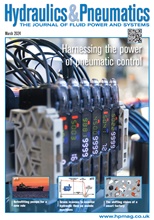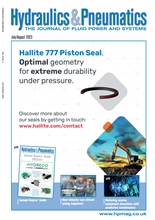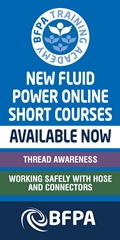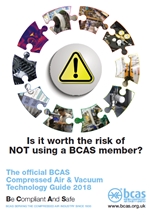- Home » Editorial » Hydraulics
Reducing your carbon footprint with heat exchangers

Around the world, private companies and government agencies are looking to reduce the greenhouse gas (GHG) emissions associated with their activities, including increasing their use of renewable and low-carbon energy sources and improving the energy efficiency of their processes. Matt Hale, International Sales & Marketing Director, HRS Heat Exchangers looks at how you can potentially reduce your carbon footprint with heat exchangers.
Energy efficiency represents more than 40% of the emissions abatement needed by 2040, according to the International Energy Agency (IEA) Sustainable Development Scenario1. The IEA says, ‘Energy efficiency is the “first fuel”: reining in the scale of this unprecedented challenge, supporting net zero energy goals at lower costs, and delivering a wide array of benefits for society.’
Furthermore, ‘According to the IEA Efficient World Scenario, currently existing cost-effective technologies are sufficient to double global energy efficiency by 2040.’ Heat exchangers are just such an existing, cost-effective technology. Technologically proven for over a century, developments in materials and design mean that many types of heat exchanger, such as those utilising corrugated tubes and energy recovery, are now more energy efficient than ever before.
The biggest efficiency benefits of heat exchangers come about when they facilitate the reuse of as much of the thermal energy generated or used during a process (such as heating, cooling, pasteurisation, evaporation, etc.) as possible. Distributing heat more efficiently throughout production facilities has been recognised as a key factor in improving efficiency and reducing greenhouse gas (GHG) emissions in industries including chemical refining, water treatment and manufacturing.
Many processes require heat, but not all of them utilise all of it. For example, a process using steam at 100°C or more may result in a hot water stream with a temperature of 80-90°C. In some cases, this will be reheated in a continuous cycle, but in the least efficient situations it may simply be dumped, perhaps requiring cooling before it can be discharged. Water with this temperature profile has a range of potential uses, including pasteurisation and low temperature evaporation. Rather than continually heat and then dump process hot water, it makes far more sense to reuse it where possible, by transporting it to where else it is needed in the facility.
Examples of heat recovery with heat exchangers
The first typical example can be seen in food production, if we imagine a product that needs to be pasteurised. The product needs to be heated to the necessary temperature to achieve pasteurisation, then rapidly cooled to maintain shelf life and quality. This is achieved through the use of two heat exchangers. The first uses hot water to raise the temperature, while the second uses chilled water to cool the product down again. In the second process, the temperature of the cooling water is increased significantly. There are three options for dealing with this heated water: discard or discharge it elsewhere; cool it again for re-use; or cool it again for re-use but use some of the heat it contains towards the heat required for the pasteurisation phase. This third option utilises heat recovery or heat regeneration, reducing the amount of new energy required for the subsequent first heating phases.
-
Smart Manufacturing & Engineering Week
05 - 06 June, 2024
NEC, Birmingham -
HILLHEAD 2024
25 June, 2024, 9:00 - 27 June, 2024, 16:00
Hillhead Quarry, Buxton, Derbyshire UK










